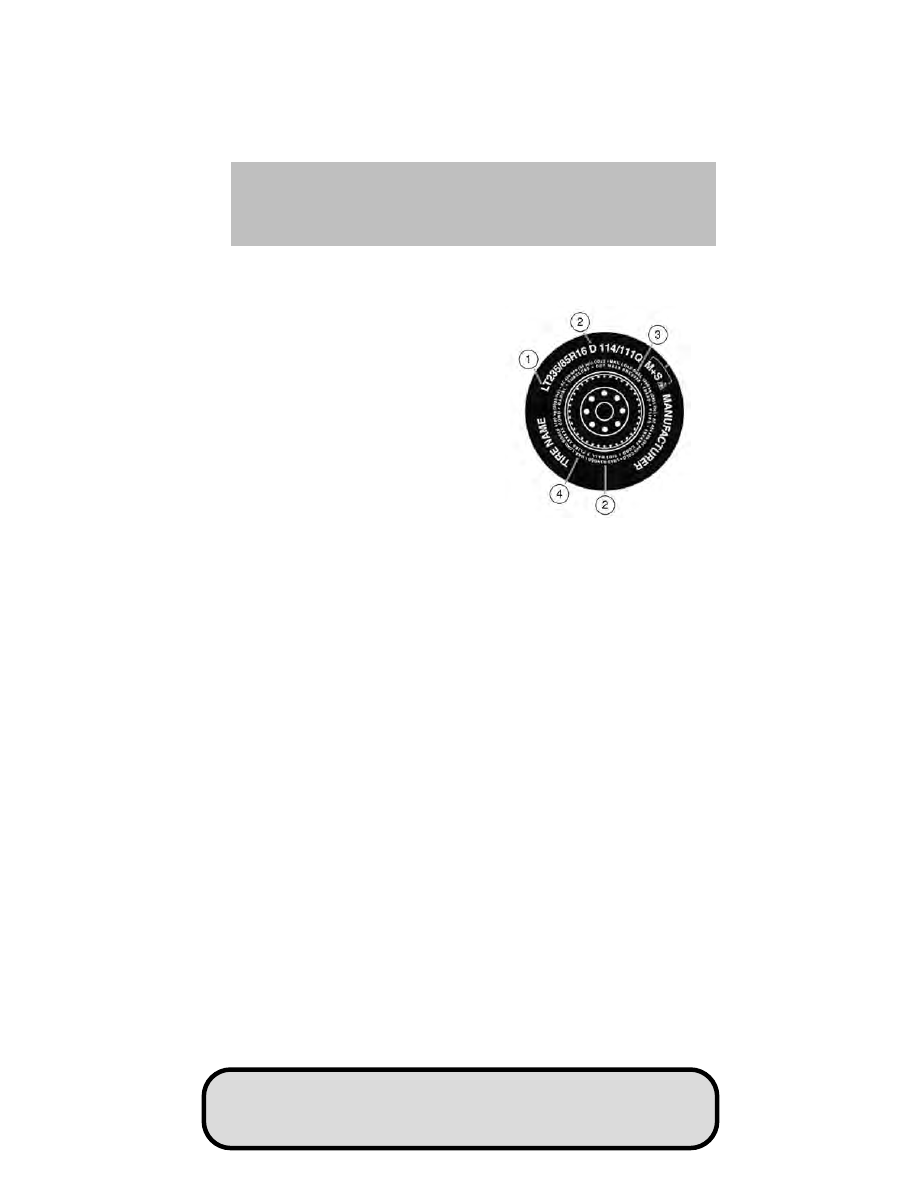Mazda B-Series (2010 year). Manual - part 9

Additional information contained on the tire sidewall for “LT” type
tires
“LT” type tires have some additional
information beyond those of “P”
type tires; these differences are
described below.
Note:
Tire Quality Grades do not
apply to this type of tire.
1. LT: Indicates a tire, designated
by the Tire and Rim Association
(T&RA), that is intended for
service on light trucks.
2. Load Range/Load Inflation
Limits:
Indicates the tire’s
load-carrying capabilities and its
inflation limits.
3. Maximum Load Dual lb (kg) at psi (kPa) cold: Indicates the
maximum load and tire pressure when the tire is used as a dual;
defined as four tires on the rear axle (a total of six or more tires on
the vehicle).
4. Maximum Load Single lb (kg) at psi (kPa) cold: Indicates the
maximum load and tire pressure when the tire is used as a single;
defined as two tires (total) on the rear axle.
Tires, Wheels and Loading
138
REVIEW COPY ——
2010 B-Series (mbs), Owners Guide (own2002), 1st Printing, Market:
Canadian_French (fr_can)